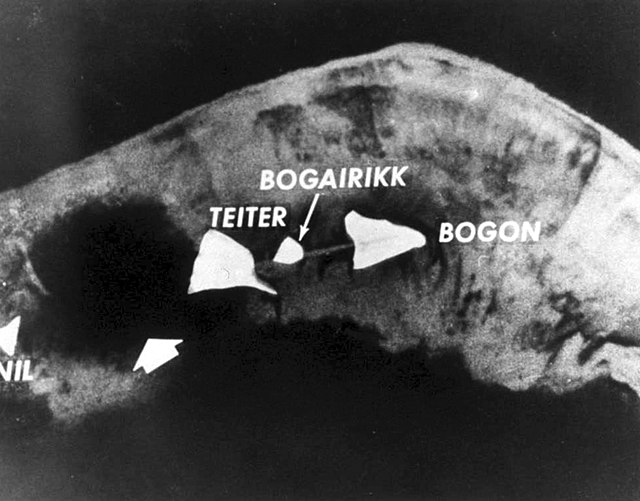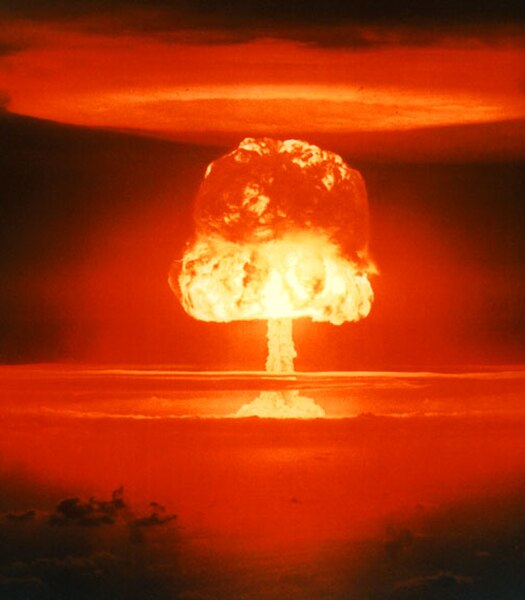Ivy Mike was the codename given to the first full-scale test of a thermonuclear device, in which part of the explosive yield comes from nuclear fusion.
Ivy Mike was detonated on November 1, 1952, by the United States on the island of Elugelab in Enewetak Atoll, in the now independent island nation of the Marshall Islands, as part of Operation Ivy. It was the first full test of the Teller–Ulam design, a staged fusion device.
A view of the "Sausage" device casing, with its instrumentation and cryogenic equipment attached. The long pipes were for measurement purposes; their function was to transmit the first radiation from the "primary" and "secondary" stages (known as "Teller light") to instruments just as the device was detonated, before being destroyed in the explosion. Note man seated lower right for scale.
The Ivy Mike shot cab and signal tower.
Enewetak Atoll, before "Mike" shot. Note island of Elugelab on left.
Enewetak Atoll, after "Mike" shot. Note crater on left.
A thermonuclear weapon, fusion weapon or hydrogen bomb (H bomb) is a second-generation nuclear weapon design. Its greater sophistication affords it vastly greater destructive power than first-generation nuclear bombs, a more compact size, a lower mass, or a combination of these benefits. Characteristics of nuclear fusion reactions make possible the use of non-fissile depleted uranium as the weapon's main fuel, thus allowing more efficient use of scarce fissile material such as uranium-235 or plutonium-239. The first full-scale thermonuclear test was carried out by the United States in 1952 and the concept has since been employed by most of the world's nuclear powers in the design of their weapons.
Edward Teller in 1958
Operation Castle thermonuclear test, Castle Romeo shot
Operation Grapple on Christmas Island was the first British hydrogen bomb test.
One of France's Triomphant-class nuclear-armed submarines, Le Téméraire (S617)








